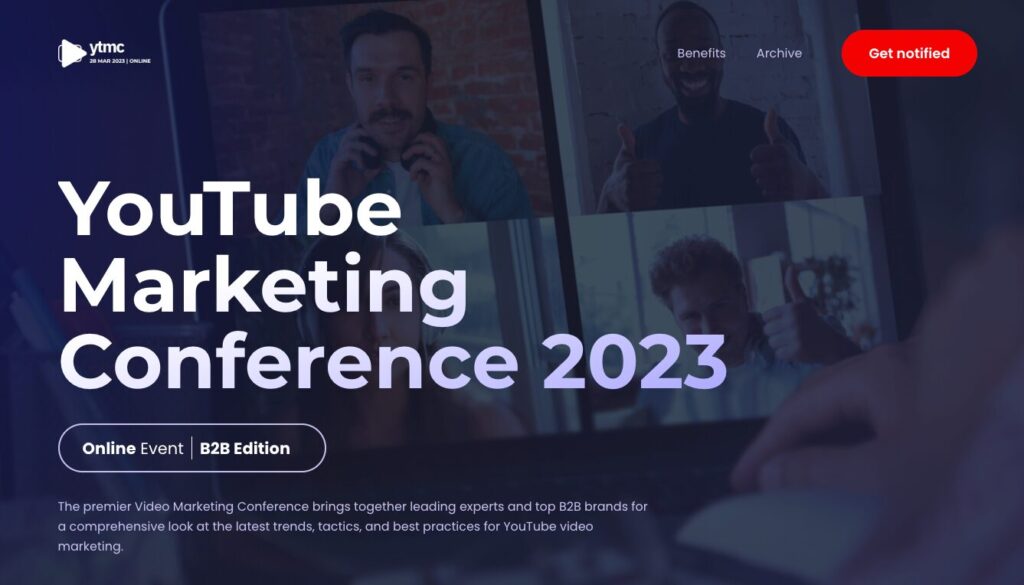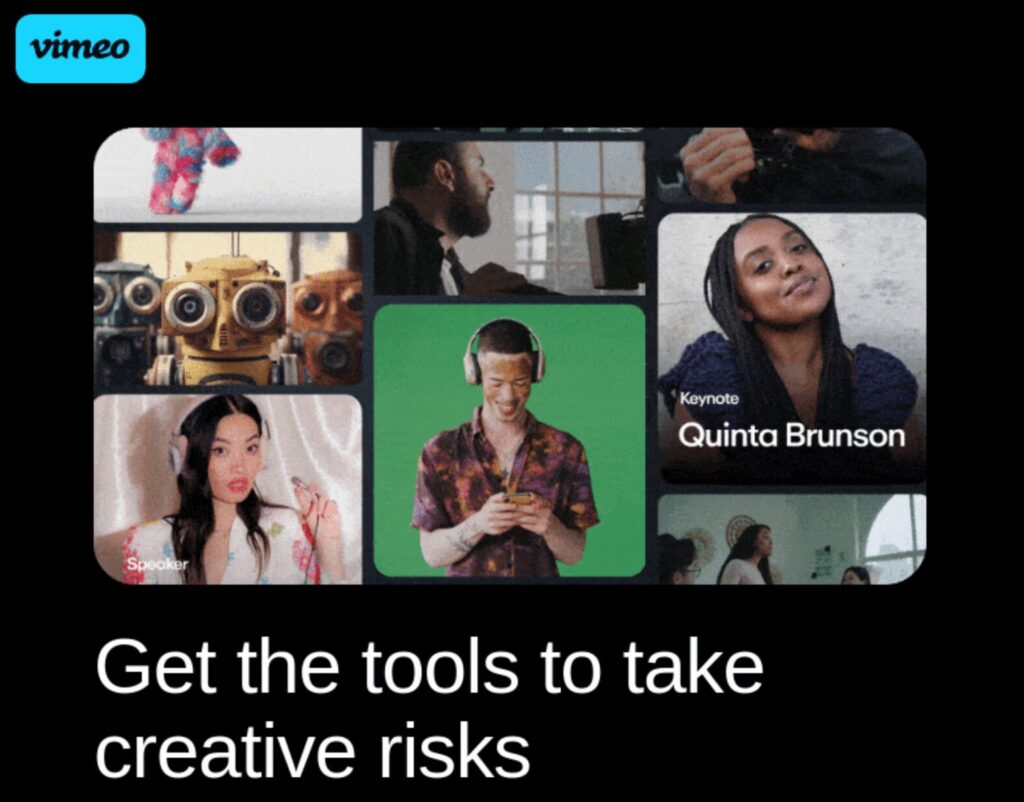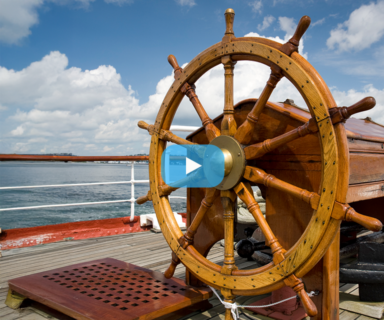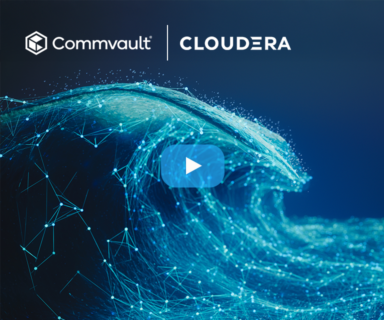Imagine: It’s been a week since you held your virtual event. Your calendar is full of meetings with qualified leads. Decision-makers at your organization are asking when the next event will be. You’ve gained new social followers, spotlighted guest speakers, and added subscribers who actually open your emails. Even Mondays feel good.
How did you get here? Keep reading to learn how to optimize your virtual event marketing strategy—from start to finish—and make the moment (and the momentum) last.
Before Your Event
The best events don’t start at showtime. Lay the groundwork for results that get your entire team excited and maximize your time leading up to the event. These seven tips will help you succeed early and arrive prepared.
Gather With a Goal
The first rule of any event: have a clear purpose.
That’s what Priya Parker teaches us in her best-selling book The Art of Gathering. Having a clear purpose not only helps you shape a stronger event, but it also helps you generate more valuable, audience-aligned content from it. As a B2B marketer, challenge the default narrative by asking yourself:
- What are your needs for hosting this event, and why are you the best brand to host it?
- Next, flip the lens to your target audience: What are their needs at this specific moment?
“When we don’t examine the deeper assumptions behind why we gather, we end up skipping too quickly to replicating old, staid formats of gathering. And we forgo the possibility of creating something memorable, even transformative.”
Define Your Win
Determine what a successful outcome looks like… and push yourself to think beyond attendee rates. A well-executed (and memorable!) virtual event strategy can elevate brand visibility, spark sales conversations, and deepen client relationships.
73% of B2B marketers rate webinars as their top source of high-quality leads.
The keyword, though, is quality. After all,100 engaged leads are more valuable than 1,000 passive prospects.
Invite with Intention
Make your registration process as easy as possible—and make it resonate. Start by thinking of your landing page as an invitation. Go beyond logistics and use strong copy to explain what one could gain by attending by playing with two powerful forces in psychology: filling a knowledge gap or sparking curiosity. To further optimize conversion, consider personalization. (The average number of registrations from personalized landing pages increased by 3X in 2024.)

Click to see the whole landing page.
Promote to Convert
Utilize a balanced approach that combines email campaigns, social media, content marketing, and paid advertising to effectively get the word out about your virtual event. One underutilized strategy is using your site as a registration avenue. This could involve adding a banner to your homepage, an inline ad to current blog posts, or pop-up messages on relevant website pages and blog posts. In a world of ads, make your promotional content an invitation.

Click to see the whole email.
Spotlight Your Headliners
As a marketing leader, you know guest speakers are one of the biggest appeals of any virtual event, so you’re bound to have great ones. But don’t stop there. To build anticipation, record and share a short video clip asking each speaker 1-2 insightful questions tied to their topic. If attendees find value in the free Q&A, they’ll be more likely to sign up. From there, create promotional materials and copy for speakers to share, helping you amplify your event.
Co-Create Success
Partner with clients, companies, or publishers who align with the goals of your event to enhance its value and visibility. Consider where your audience frequents and what brands they frequently engage with to determine your shortlist of potential partners. You can also develop sponsorship packages to turn partners into sponsors and maximize your ROI.
Build Momentum Early
Boost your registration-to-attendee rates by priming your audience in advance. As Parker writes, “90% of what makes a gathering successful is put in place beforehand.” Don’t just send logistical reminders—use storytelling to spark excitement and make attendees feel like your event is something they simply cannot miss.
During Your Event
This is where your virtual event marketing strategy meets the spotlight. You’ve done the prep—now it’s about showing up, keeping energy high, and making the most of every moment.
Live webinars are one of the top formats associated with buyers planning to purchase within the next three months.
Use these five tips to help make their decision feel like a no-brainer.
Start with a Bang
Getting your attendees to join a virtual event is one thing. Getting them to stay—and actually pay attention—is another. Hook attendees from the start with an opener that makes them sit up and lean in:
- Novelty. Drop an unusual fact or surprising stat that makes attendees feel like there’s much more to learn.
- Resonance. Share a real-world experience that hits on relevant pain points to make attendees feel seen.
- Disruption. Challenge a common assumption or industry norm to earn their undivided attention.
Your opening needs to be a kind of pleasant shock therapy. It should grab people. And in grabbing them, it should both awe the guests and honor them.
Earn Their Attention
You started strong; now stay strong. Offer valuable insights and actionable takeaways with an ownable conversation that balances your unique value proposition and what your audience is struggling with most. Give each speaker a chance to feed into that value. If you use a deck to guide the conversation, make it for attendees, not the speakers. Each slide should either clarify the point or earn a screenshot.
Make Space for Connection
As B2B marketers, we’re deeply entrenched in the attention economy: constantly battling to capture and hold consumers’ interest. Events are no exception. Keep things interesting by weaving in real-time interaction that makes attendees feel connected to the content. Go beyond the standard Q&A with live polls, prompts, or putting attendees in the hot seat for unscripted moments that feel spontaneous, relevant, and human.
Really want to level it up? Try attendee matchmaking. One brand that excels in this is Second Degree Society (or SDS). SDS asks attendees to provide short bios during registration, then kicks off each virtual event with two curated one-on-one conversations. These convos set the tone for the event, making the rest of the experience feel more personal and purposeful.
Turn Moments Into (More) Assets
Want to maximize your ROI? Repurpose your webinar content, and you could increase your audience reach. Pull speaker quotes, clip standout moments, recap poll data, and document the questions that flooded the chat. You’ll walk away with a wealth of assets for blog posts, social content, email recaps, and more.
B2B marketers receive 6.3 new pieces of content from each webinar on average.
Stick the Landing
End on time—and leave time for a proper close. Benchmarks show the average duration of webinar engagement in 2024 was 51 minutes, which aligns nicely with our recommendation to aim for between 45 and 60 minutes, including Q&A. But avoid rushing through content to hit that mark. You want to have a proper bookend, especially knowing people largely base how they remember something on how they felt at its peak—and its end.
And don’t just wrap with a CTA, either. Challenge attendees to consider how they will use what they’ve learned. What will they do differently when the webinar window closes? (If all goes well, your brand becomes part of the thread.)
After Your Event
The event may be over, but the opportunity to maximize your ROI continues. Now is the time to recap, reflect, and repurpose. Follow these five tips to squeeze the most out of your event, so you’re not stuck squeezing a stress ball during your next one.
Segment To Follow Up Smarter
Organize your RSVP list by key attributes, such as job title, industry, location, and age. Take it further by implementing a lead-scoring system that considers past engagement, online behavior, and the key attributes that best align with your brand personas. Doing so allows you to prioritize the contacts most likely to convert—and tailor future communications accordingly.
Say Thanks—and Then Some
Follow up with attendees 24-48 hours after the event while the experience is still fresh on their minds. But don’t just drop a link to the recording; use this key email to add value. Share related content (like blog posts or whitepapers), offer ways to keep the convo going (like a LinkedIn group, and give a sneak peek at what’s coming next. If you’re asking for feedback, consider a thoughtful incentive to boost response rates.
Oh, and don’t forget to thank your speakers and your partners and ask them for feedback, too.
Reconnect With the No-Shows
There’s bound to be a segment of people who RSVP’d but didn’t attend. Don’t write them off—re-engage them with a personalized follow-up. Share event highlights, helpful resources, or even a limited-time offer. Make the highlights count by anchoring them in the moments that saw the biggest action: when chat activity spiked, when emoji reactions lit up (which, btw, have seen a 68% YoY increase), or when questions flooded in. It’s not over until the recap lands.
Keep the Views Coming
Give your virtual event somewhere to live beyond the livestream.
By making your events on-demand, you can increase your total views by up to 80%.
According to data from ON24, a B2B digital engagement platform, the average number of “Contact us” requests per hub rose by 37% in 2024, while demo requests increased by 44% on average.
Debrief with Depth
Review your original goals to see where you landed—but don’t stop there. Dig into the performance of your promo assets, live-event engagement, and post-event feedback. Then, zoom out. Consider what surprised you, what stretched your team, and what could shape your future B2B event marketing strategy. Use it all to inform your next move and maximize ROI.
Consider these thoughtful qualitative questions, too:
- Which part of the promo plan did the heavy lifting? What flopped?
- What messaging resonated most in pre- and post-event marketing?
- Did we learn anything that could inform a future product, offer, or campaign?
- What speaker, format, or moment helped move us closer to trust or conversion?
- Did we uncover any unexpected audience pain points or objections?
- What internal process slowed us down—and how can we fix it next time?
- If this event had to earn its budget again, what would we do differently?
- What are we proud of that won’t appear on our analytics dashboard?







